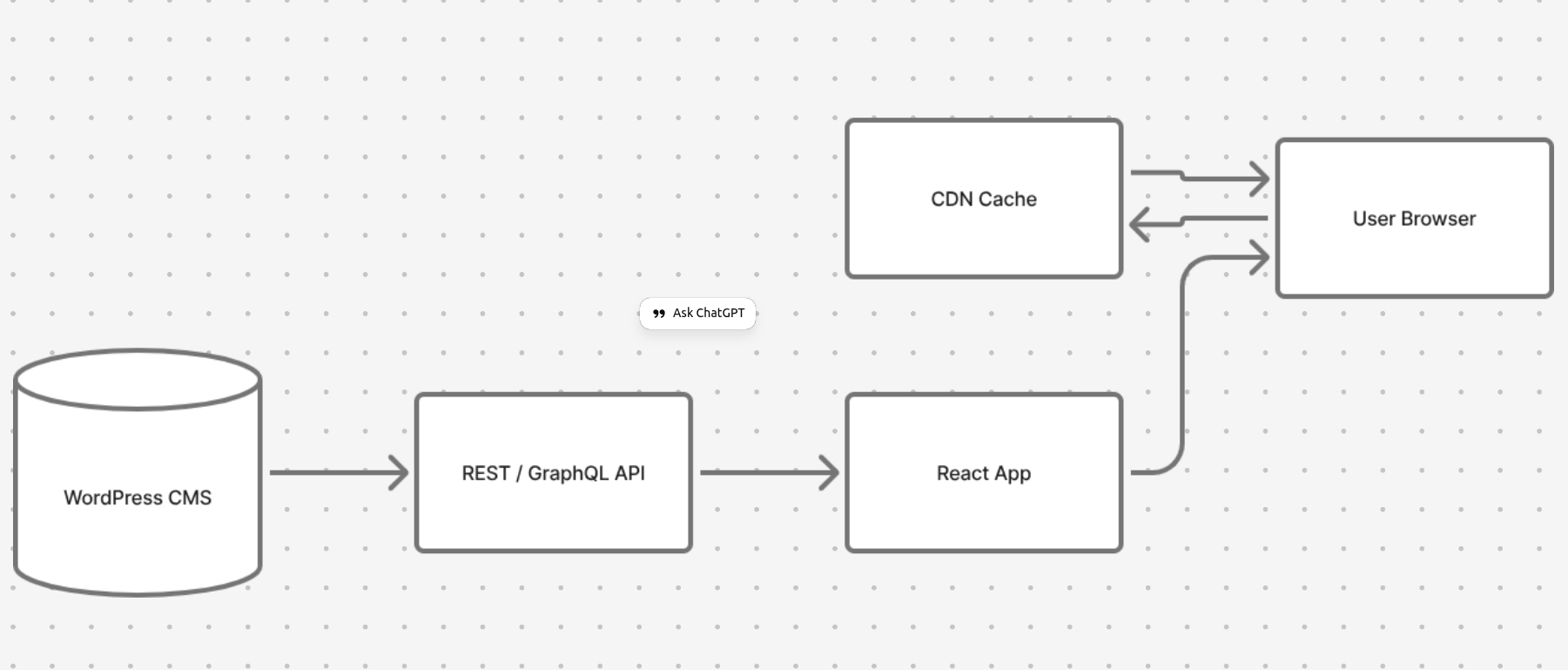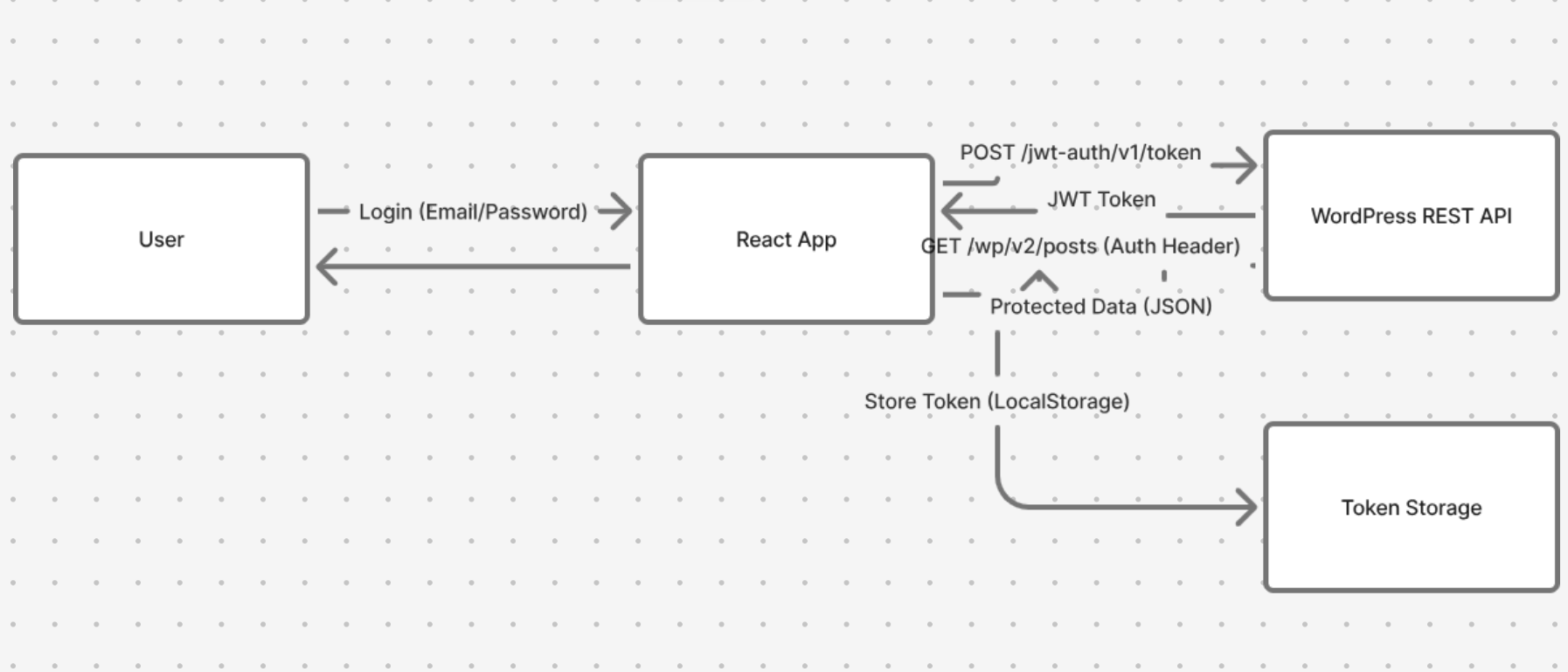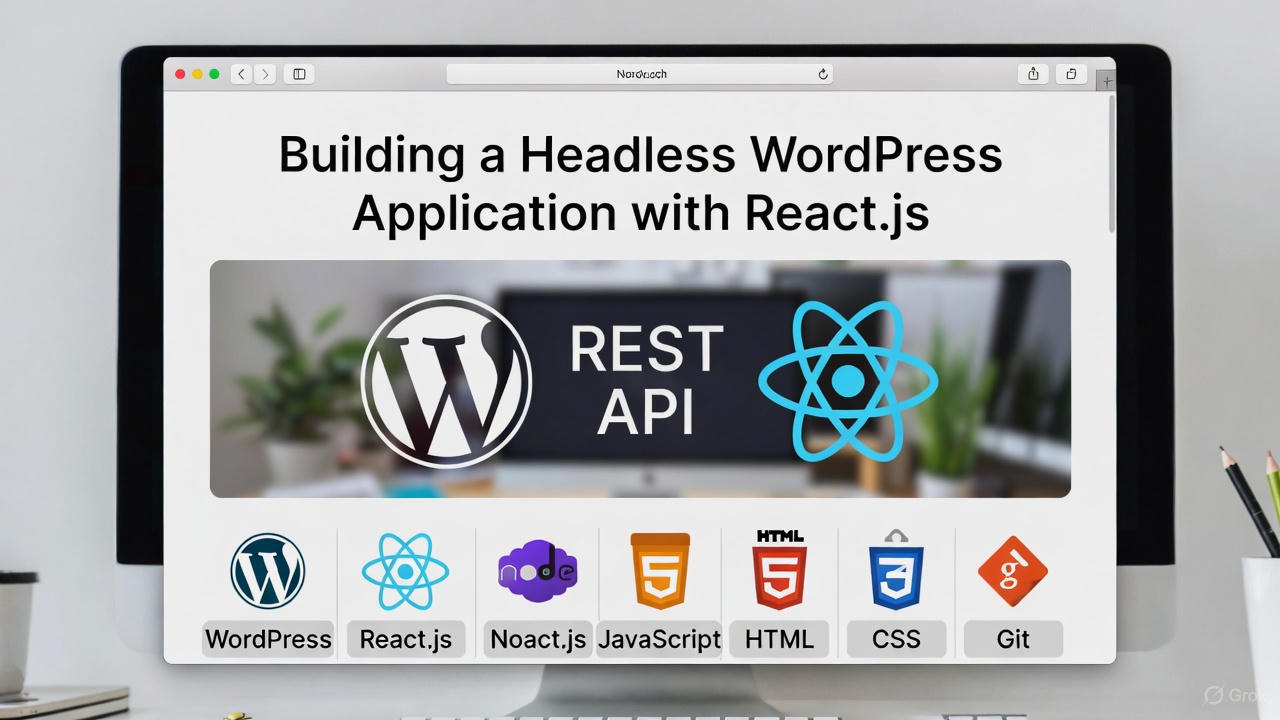Introduction
Traditional WordPress sites render both backend and frontend using PHP themes. This works for simple sites but can limit performance and modern application requirements. The headless (decoupled) approach uses WordPress purely as a content management system and serves data to a separate React.js frontend using the built-in WordPress REST API.
This architecture provides the flexibility of React with the content power of WordPress — a future-ready approach for professional websites.
Why Choose Headless WordPress + React?
The benefits are significant:
- Lightning-fast frontend performance using static generation or SSR
- Complete separation of backend content from UI code
- Deliver content on multiple platforms — Web, Mobile, Digital Screens
- Better security — database and PHP are fully hidden from the public
- Developers get to use tools like TypeScript, Tailwind, Vite, etc.
- Frontend can be updated or replaced anytime without touching WordPress
However, there are trade-offs:
- Custom solution needed for draft preview
- Higher setup complexity — two separate applications
- Heavy JavaScript dependency
- Deployment of backend and frontend needs proper planning
Architecture Overview
A typical no-plugin headless setup consists of:
- WordPress Backend – Manages content and media
- REST API – WordPress built-in API for structured data
- React Frontend – Handles UI rendering and routing
- Separate Hosting Environments for backend and frontend
WordPress (Head) ←→ REST API ←→ React Frontend (Body)
↑ ↓ ↑
Content JSON Data Fast UI + SSR
Headless WordPress + React Data Flow
WordPress → REST API → React → Browser Flow
WordPress provides JSON responses for posts, pages, menus, custom content — enabling a modern frontend to render the content efficiently.

Custom Authentication Flow
For protected content or admin-only preview, developers can implement a custom token-based authentication using WordPress REST endpoints and custom code — no plugins required.

Setting Up the WordPress Backend
Requirements without plugins:
- Enable built-in REST API (enabled by default)
- Create custom endpoints using
register_rest_routein functions.php - Add post meta and custom fields using core WordPress features
- Implement authentication using custom REST handlers
Example REST API Request
GET: https://yourdomain.com/wp-json/wp/v2/posts?slug=your-post
Building the React Frontend
Recommended stack: React.js + TypeScript + Tailwind CSS (or Next.js for SSR)
Fetching Data from REST API
export async function getPost(slug) {
const res = await fetch(
`https://yourdomain.com/wp-json/wp/v2/posts?slug=${slug}`
);
const post = await res.json();
return post[0];
}
Rendering Content
export default async function PostPage({ params }) {
const post = await getPost(params.slug);
return (
<article>
<h1>{post.title.rendered}</h1>
<div dangerouslySetInnerHTML={{__html: post.content.rendered }} />
</article>
);
}
Handling Preview & Authentication
To preview drafts without plugins:
- Create custom REST endpoint that returns draft content for authorized users
- Set a secret preview token in WordPress admin
- Use middleware or API routes in React to validate access
Performance & SEO Best Practices
- Use static generation for posts and pages
- Serve images through WordPress built-in thumbnail sizes
- Add meta tags directly in React (title, description, OG tags)
- Lazy-load large content blocks for speed
- Implement caching for REST API responses
Conclusion
Headless WordPress with React.js gives modern performance and flexibility — even without any third-party plugins or services.
You keep the familiar WordPress editing experience, while building a frontend optimized for speed and scalability.
Start simple. Fetch posts from the REST API and render them in React. Once comfortable, extend with custom endpoints, authentication, and SEO.
